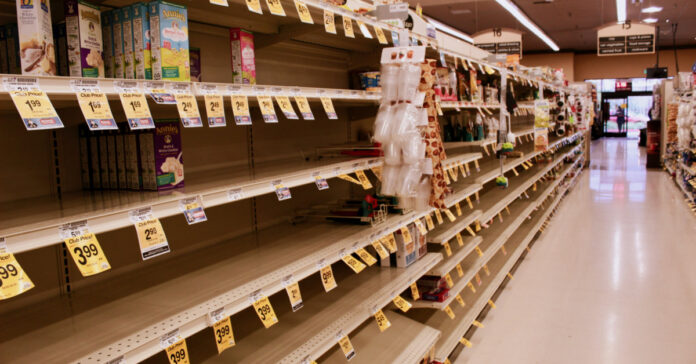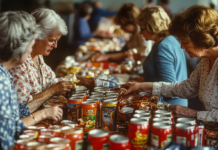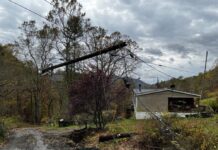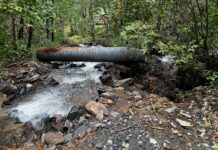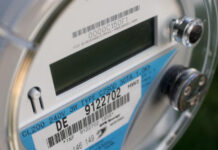So you’ve finally decided that prepping makes sense and now you have to decide what to buy, how much to buy, and over what time period you will buy it. This will be determined largely by your budget and how much money you have to spend on prepping. Because prepping can get expensive, most people build up their supplies over time by setting aside a certain amount to spend per paycheck or per month.
When you go down the list of things you need to feel prepared to withstand a disaster, food will probably be a big expense and the one that takes the most storage space. Sure, you could put together a bug out bag, buy guns and ammo, or even invest in a big four-wheel-drive truck or SUV for bugging out, but food is more likely to save you than almost anything else you could acquire. Yes, water is critical, but you can spend $500 and have water pretty well taken care of. Food is going to demand more money, more thought, and more preparation.
I’ve written about what to buy and how to get the most for your money’s worth in an earlier article. So let’s talk about when to buy, as well as when NOT to make large bulk purchases.
When to Stock Up
The best time to stock up on food for your prepper pantry, which should include common canned and dried foods available at your grocery store or club store, see our list of examples, is when there is no crisis and no shortage.
Likewise, the best time to stock up on special long-term storage foods in #10 cans and 5-gallon pails is before a crisis hits. Because these dried or dehydrated foods are packaged in special containers with oxygen absorber packets, they should have a shelf life of seven to twenty years. That’s why we call them “long-term storage food.” Unfortunately, they sell out quickly when a disaster hits.
There are several reasons to stock up early, as I outline below:
1. Stockpiling vs Hoarding
When you buy more food than you need during the good times, you are not hurting anyone else, you are not depriving someone of food they need, and no one can blame you for stockpiling food when there is plenty of it. If, however, you are one of those people who rushed out and bought the 144 rolls toilet paper or the last 32 cans of Spam when you first heard COVID-19 was coming, of cornered the market on generators before the hurricane hit, then someone might well accuse you of hoarding.
Hoarding is generally frowned upon because it is considered “unfair.” You bought extra during a shortage, which exacerbated the shortage and potentially deprived someone else from buying their much-needed can of Spam. I recommend avoiding the appearance of hoarding because it draws attention to you and may make you a target. It also makes preppers look bad, and we don’t need any more negative publicity.
The only thing looked down upon more than hoarding is if you try to sell your $3 can of Span for $10. That’s profiteering, and people hate someone who profits from the misfortune of others. So be careful. If you shop after an emergency has broken out, do not appear to buy large quantities of goods. Use it as an opportunity to fill in holes in your emergency food supplies, not to make up for those months in which you were too lazy to prepare.
2. Quantity Limits and Price Increases
One reason to ship early is that stores will often put a limit on how much you can buy after an emergency causes a supply crunch. During the initial COVID-19 outbreak, many stores put a “one-per-customer” limit on packages of toilet paper and disinfectant wipes. Gun stores often limited customers to two or three boxes of ammo during the shortage.
It’s not just availability that’s an issue, but pricing. Shortages can cause price gouging, or at least an increase in prices. Most recently, what was once a $12 box of 9mm target ammo jumped to $45 or more. When ammo is in good supply, you could pick up a case of 500 or 1,000 rounds of 9mm at a cheap price. By stocking up early, you avoid shortages and ensure yourself a good price.
With inflation bearing down on us, the sooner you buy may also mean the more you save.
3. Pipeline Problems
We’re not talking about hacking a gas pipeline here, but the supply pipeline of long-term storage food. There are only a few companies that produce long-term storage food in #10 cans. When an emergency hits, everyone rushes out and buys survival food. The result is that the food on store shelves sells out, and the suppliers ship everything in their warehouses. Then they get into back order situations and can’t fill orders for weeks or even months. If the government buys large quantities of freeze dried foods or MREs, the situation can get even worse.
We saw this happen when COVID-19 struck, but I’ve seen this for every disaster, from shortages prior to Y2K to the aftermath of Hurricane Katrina and just about every other major disaster. Specialized prepper food is not a huge market most of the time, but when an emergency arises, sales hoot up and the industry can’t keep up. Buy your long-term storage food now, while it’s available with little or no shipping delays.
There are plenty of long-term storage brands and companies out there, but my favorite for years has been Rainy Day Foods. I don’t get a commission or anything from recommending them; I just like their selection and packaging options.
Avoid MREs, Wise Foods, and other freeze-dried single-serving packages unless you are already well stocked and find you have extra money in your prepping budget.
It Applies to More than Food
While I have used food as an example, the idea of stocking up before you need something applies to all your prepping gear. We mentioned guns and ammo earlier. Certainly people who had made their purchases prior to the recent shortages and cost run ups were better off than those how had to pay top dollar. For example, potassium iodate and iodide sold out immediately after the earthquake and tsunami hit the Fukushima nuclear plant in Japan in 2011. During the anthrax scare after 9/11, there were concerns that there would not be enough Cipro if there was an outbreak and it was difficult to buy gas masks.
It also applies to common, everyday items that can be useful after a SHTF even, such as garden tools, seeds, chain saws, gasoline cans, generators, tarps, bottled water, plywood and lumber, etc.
Prepping is a Journey
Don’t expect to be fully prepared in a short amount of time. Prepping is a journey, not a destination. And just as you accumulate prepping supplies over time, you build your skills and knowledge base step by step. Diligence and perseverance are important, but so is getting started.
If you have made a good start prepping but then slowed down, re-commit to it. if you have just started, then build that prepper pantry as your first step. For those of you who think you are prepared, take another look; something has probably expired, gone bad, or been damaged. Keep pushing forward.

